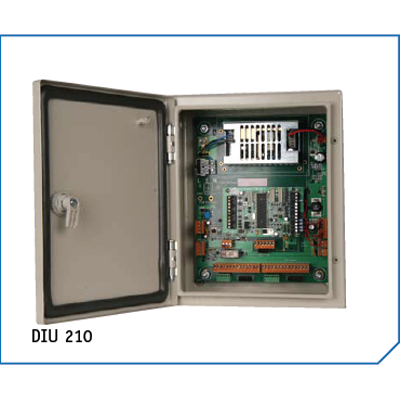CEM DIU210 door interface unit
Technical Specification

- Make: CEM
- Model code: DIU210
- Voltage: 100 ~ 240 V AC
- Power Consumption: 0.6 A
- Dimensions mm: 300 x 250 x 150
The Door Interface Unit (DIU 210) is designed primarily to provide power to a door lock, as well as local power to a CEM reader when a high level of security is required. It has onboard inputs which can be used to monitor conditions such as a fire alarm or activated Break-glass condition. The DIU 210 improves door security, by allowing the installer to locate lock controls on the secure side of a door, with an intelligent CEM reader on the unsecured side. The DIU 210 communicates with an intelligent CEM reader over a single pair RS485 cable. Upon a valid swipe at the card reader, the reader will instruct the DIU (over the RS485 communications channel) to activate the appropriate output to release the lock using a coded data signal (i.e. coded lock).
Read more| Make | CEM |
|---|---|
| Manufacturer | CEM Systems Ltd |
| Category | Access control products >Access control readers |
| Model code | DIU210 |
| Electrical Specifications |
Voltage: 100 ~ 240 V AC Power Consumption: 0.6 A |
| Physical Specifications |
Dimensions mm: 300 x 250 x 150 Weight g: 4,3000 |
| Environmental Specifications |
Operating Temp oC: -10 ~ +40 Operating Humidity %: 0 ~ 95 |
| Accessories: Door Interface Unit | |
| Additional info |
The Door Interface Unit (DIU 210) is designed primarily to provide power to a door lock, as well as local power to a CEM reader when a high level of security is required. It has onboard inputs which can be used to monitor conditions such as a fire alarm or activated Break-glass condition. The DIU 210 improves door security, by allowing the installer to locate lock controls on the secure side of a door, with an intelligent CEM reader on the unsecured side. The DIU 210 communicates with an intelligent CEM reader over a single pair RS485 cable. Upon a valid swipe at the card reader, the reader will instruct the DIU (over the RS485 communications channel) to activate the appropriate output to release the lock using a coded data signal (i.e. coded lock). |
| Download PDF version | |


